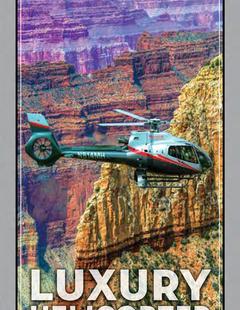Basics
- Length:
- 20 miles (32 km)
- Time:
- 2 hours
- Fees:
- Hawaii Volcanoes National Park charges park entrance fees.
Description
Chain of Craters Road, located in Hawaii Volcanoes National Park, is a 20-mile journey that showcases a natural landscape shaped by volcanoes. Whether driving or hiking, visitors can see craters, lava flows, tropical rain forests, mountains, and coastal areas.
Visitors can drive the 11-mile Crater Rim Drive that circles Kilauea Caldera, one of Hawaii's most active volcanoes. Lava flows display the liveliness of Kilauea Caldera, and after nightfall, luminescent red lava creates a pyrotechnic spectacle for viewing areas along Crater Rim Drive and Chain of Craters Road.
Near the road is Mauna Ulu, site of the 1969-1974 eruption that covered twelve miles of Chain of Craters Road and appended 200 acres to the coastline. When lava flowed from Mauna Ulu, it covered the trees in surrounding areas, creating lava trees. The trees' cool temperature hardened the lava and created a coating as the lava burned away the trees, crafting a flawless mold.
Chain of Craters Road has overlooks and trails displaying craters and lava flows. Along a two-mile hike around Pu'u Huluhulu, visitors can observe the lava trees and the cone of Pu'u O'o. At Pu'u Loa, over 15,000 petroglyphs were engraved into pahoehoe lava. These places, and many more, provide visitors with opportunities to hike and stroll near the natural formations.
A series of natural wonders grace the paths along Chain of Craters Road, inviting visitors to experience and explore the spectacular surroundings of one of the most exciting roads on the Big Island.
Tourism Resources
Helpful Links
Tourism Resources
Points of Interest
Points of Interest Along The Way
Alanui Kahiko (HI)
This roadside pulloff is the site of the 1969 lava flow that covered the Chain of Craters Road. Interpretation draws the visitor's attention to the lava covering the road, explains that lava flow covered 12 miles of the road (in some places, 100 meters deep), and points out that a similar occurence could block any road in the park at any time. It emphasizes the active volcanic processes and the temporary nature of human development.
Directions
Located 14.1 miles from the junction with Crater Rim Drive.
Crater Rim Drive (HI)
This loop road traverses the edge of Kilauea Caldera, one of the world's most active, and accessible volcanoes.
Directions
Crater Rim Drive joins Crater Rim Road near Devastation Trail in Hawaii Volcanoes National Park.
Eruption Site (HI)
This is the present end of the road where lava covered it in 1995. The area functions as a popular trail head to the active lava flows to the east.
Directions
Located at the current end of Chain of Craters Road (as of 1999), 20 miles from junction with Crater Rim Drive.
Halema`uma`u Crater (HI)
This crater lies inside the vast Kilauea Caldera. Smells of sulfur and hissing steam rise from fissures in the rock from this still active volcanic area.
Directions
Located about 3 miles from Chain of Craters Road.
Halona Kahakai (HI)
This roadside pulloff and constructed overlook provides dramatic southwesterly view down the length of Holei Pali. Interpretation describes how a pali like Holei Pali was formed, by a downward sloping of the volcanic mountain slope.
Directions
Located 10.6 miles from the junction with Crater Rim Drive.
Hawaii Volcanoes National Park (HI)
Created as the 13th National Park in 1916, Hawaii Volcanoes National Park displays the results of 70 million years of volcanism, migration and evolution.
Directions
Located 30 miles from Hilo on the big island of Hawaii.
Hiiaka Crater (HI)
This roadside pulloff features signs designating Hiiaka Crater.
Directions
Located 2.72 miles from junction with Crater Rim Drive.
Holei Pali (HI)
A roadside pulloff constructed on both sides of the roadprovides a view of Holei Pali. Interpretation explains why the lavaflowing down the pali appears to be of different colors, anddescribes the various stages of revegetation visible on the pali.It explains the history of lava flow from the east rift zone ofKilauea Volcano and Mauna Ulu, 1969-74, and the building of theisland of Hawaii through lava flows. It also defines a "kipuka",and describes that they provide a seed source for naturalrevegetation.
Directions
Located 14.9 miles from the byway`s junction with Crater Rim Drive.
Holei Sea Arch (HI)
This is a short trail to a viewpoint of a natural stone "bridge" along this rocky section of seacoast. Interpretation describes how the sea carves the lava coastline, creating features like the sea arch and providing nesting habitat for noddy terns.
Directions
Located 18.90 miles south from the byway`s intersection with Crater Rim Drive.
Jaggar Museum (HI)
Visitors to Thomas A. Jaggar Museum, located next to the Hawaiian Volcano Observatory (not open to the public) can see geologic displays, videos of eruptions and working seismic equipment. There are also spectacular overlooks into Kilauea Caldera and Halema'uma'u Crater.
Directions
Located 3 miles inside the park entrance (about 6 miles from Chain of Craters Road.)














